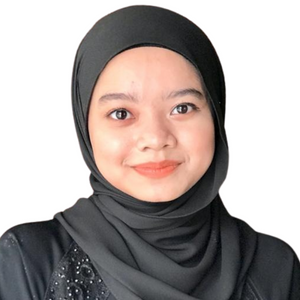Celebrating Eid around the world

Hari Raya Aidilfitri, known internationally as Eid al-Fitr, is a religious festival celebrated by Muslims all over the world. It signifies the end of Ramadan and celebrates the merriment of Syawal.
Muslim communities around the world would commonly begin the festival by visiting the mosque for a prayer, followed by a gathering of family and friends.
This article looks at how this celebration is celebrated throughout the world, uniquely in every culture.
Malaysia and Singapore
Malay families would be clad in new clothes that were usually colour coordinated within their family. In Malaysia and Singapore, men commonly wear baju Melayu, a loose-fitting full-length shirt and pants combo. While women wear baju kurung, a loose-fitting full-length blouse and skirt combination.
In these countries, the festival is usually ushered in with a spread of traditional Malay foods such as ketupat (rice cake), beef rendang (dry coconut stew), sambal (chilli sauce), sayur lodeh (vegetable stew), and other Malay specialties such as varied kueh (cake).
It is customary to open one's home to neighbours, families, and other guests (including non-Muslims). During this period, the elderly will give young people envelopes containing money called 'duit raya'.
Indonesia
In Indonesia, Hari Raya is also known as Lebaran or Idul Fitri. Similar to the culture in Malaysia and Singapore, Indonesians will buy and wear new attire during this period. Similarly to us, they would also visit the graves of deceased family members and mosques for prayers.
In terms of food, there is a slight difference in names, but the taste and preparations were also almost identical to ours. Ketupat, opor ayam (chicken cooked in coconut milk), rendang, sambal goreng ati (a spicy dish with liver and potatoes), sayur lodeh, and lemang (a type of sticky rice cake baked in bamboo) are typical traditional Lebaran dishes. Snacks like kueh, biscuits, dodol (toffee-like sugar palm-based confection), and imported dates are also served on this day, along with fruit syrup beverages.
Turkey
Eid, also known as Ramazan Bayrami among Muslims in Turkey, is a three-day celebration. Seker Bayrami (candy festival) is known as the first day of Eid al-Fitr.
Kids are expected to visit their neighbours with "Happy Bayram" greetings in exchange for sweets wrapped in handkerchiefs. Baklava, a delicious pastry consisting of filo layers and filled with nuts, and Turkish delight, a gel and sugar confection, are two examples. Not to forget, they may also receive some money.
Afghanistan
Afghan Muslims will begin preparing for Eid al-Fitr by cleaning their homes at least a week in advance. Many people shop in local bazaars for new clothes, sweets, and snacks such as Jelabi (a sweet pretzel-shaped snack made by deep-frying maida flour), Shor-Nakhod (made with chickpeas), and Cake wa Kolcha (a basic cake similar to pound cake).
Throughout the day, Afghans will first pray and then congregate in their houses with their families, greeting one another with "Eid Mubarak." During this time, family elders will present money and gifts to the kids. Afghan males also celebrate Eid with a fun food fight known as Tokhm-Jangit, in which they congregate in open locations with hard-boiled eggs and try to smash their opponent's stash.
India
Muslims in India will be dressing in beautiful and colourful clothing for the festival, donning colourful bangles as well as adorning their hands and feet with exquisite henna (also known as mehendi) patterns ranging from simple to sophisticated and ornate.
Flowers, which represent happiness, and the sun, which represents immortality and knowledge, are popular designs. During this time, special celebratory delicacies are served, such as sivayyan, a dish of toasted sweet vermicelli noodles with milk and dried fruit, and sheer khurma, a creamy vermicelli pudding with condensed milk.
Saudi Arabia
The same goes with other countries, Saudi Arabians will dress up in nice new attire – for males, an ankle-length white cotton shirt known as a thawb and a head cover called a kaffiyeh that is secured in place by a camel’s hair string known as an iqal. Women are expected to be totally veiled in public, wearing a long black cloak known as an abayah. A hijab, or head veil, covers the head, while a niqab, or face veil, covers the face. Muslims usually congregate at the home of the family's eldest member.
The kabsa, a filling and delicious dish composed of rice, a blend of spices, and braised meat on top, is a popular dish. It is generally topped with delicately roasted lamb and served to visitors during Eid. During this period, presents like date-filled pastries, butter biscuits with almonds or pine nuts, spice cake, Pashmina shawls, and spices are frequently exchanged.















